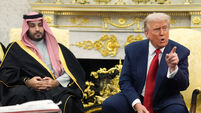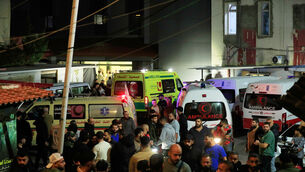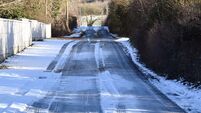Protests against Nepal’s social-media ban grow more violent as buildings torched
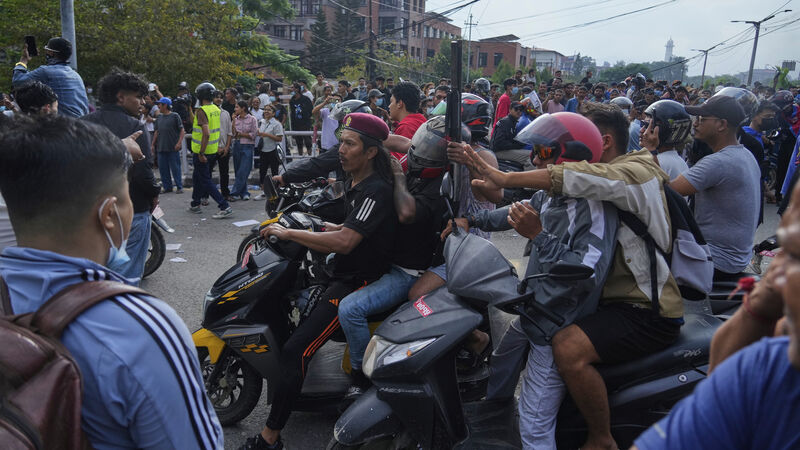
A protester rides on two wheels carrying a firearm during a demonstration in Kathmandu. Picture: Niranjan Shrestha/AP
Protests against Nepal’s short-lived ban on social media grew increasingly violent on Tuesday as demonstrators set government buildings and politicians’ homes on fire and attacked some leaders.
The prime minister had earlier resigned amid widening criticism of the country’s political elite.
The resignation appeared to have little effect on the unrest. Tens of thousands of protesters remained on the streets late in the day, blocking roads and storming government facilities. Army helicopters ferried some ministers to safe places.
A day earlier, demonstrations led by young people angry about the blocking of several social media sites gripped the capital, and police opened fire on the crowds, killing 19 people.

The ban was lifted on Tuesday, but the protests continued, fuelled by rage over the deaths and accusations of political corruption in the nation wedged between China and India.
As the protests escalated, Prime Minister Khadga Prasad Oli announced he was stepping down. The president accepted the resignation and appointed Mr Oli to lead a caretaker government until a new one is in place — al though it was unclear what power he would wield or even where he was.
President Ram Chandra Poudel, the ceremonial head of state, appealed to the protesters to engage in discussions to find a peaceful resolution and stop further escalation.
In a video message, Nepalese army chief Ashok Raj Sigdel urged protesters to stop the demonstrations to prevent further loss of lives and property and to come forward for dialogue.
In a written statement that followed, the army warned that the country’s security forces were committed to preserving law and order. It was not clear if the army, which has so far stayed in its barracks, would be mobilised to help after police failed to control the situation.
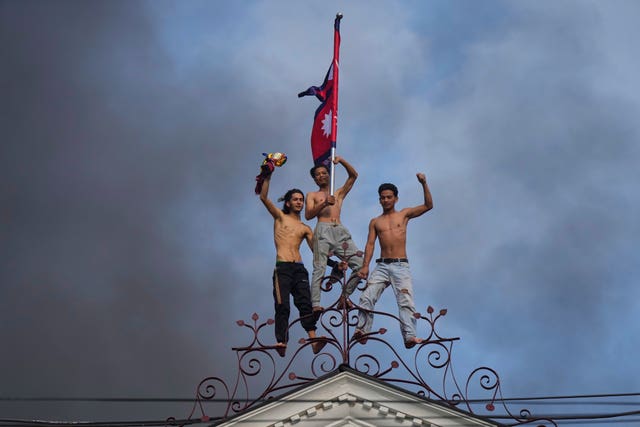
The demonstrations — called the protest of Gen Z — began after the government blocked platforms, including Facebook, X and YouTube, saying the companies had failed to register and submit to government oversight.
But the protests spiralled to reflect broader discontent. In particular, many young people are angry that the children of political leaders — so-called nepo kids — seem to enjoy luxury lifestyles and numerous advantages while most young people struggle to find work.
With youth unemployment running at about 20% last year, according to the World Bank, the government estimates that more than 2,000 young people leave the country every day to seek work in the Middle East or Southeast Asia.
“I am here to protest about the massive corruption in our country,” student Bishnu Thapa Chetri said.
“The country has gotten so bad that for us youths, there is no grounds for us to stay.”

Videos shared on social media showed protesters beating up Nepali Congress party leader Sher Bahadur Deuba and his wife, Arzu Rana Deuba, the current foreign minister. Both appeared to be bleeding, while one video showed the party leader being helped to safety. The party is the country’s largest and is part of the governing coalition.
Local media and videos on social media also showed protesters attacking government buildings and the residences of the top political leaders throughout the day on Tuesday.
The presidential palace, the prime minister’s official residence and a building that houses the offices of the prime minster and several ministries were all torched. Thick smoke rose from the prime minister’s office building.
Earlier, Mr Oli’s private home was set on fire, as were those of the president, the home minister and the Deubas. The home of the leader of the opposition Communist Party of Nepal (Maoist) was also set ablaze.
Some protesters blamed the government for the police opening fire and called for the removal of the increasingly unpopular prime minister.

“We are here to protest because our youths and friends are getting killed. We are here to see that justice is done and the present regime is ousted,” said Narayan Acharya, who was among the protesters outside the battered wall of the parliament building on Tuesday.
“KP Oli should be chased away.”
Monday’s rallies swelled to tens of thousands of people in Kathmandu and crowds surrounded the parliament building before police opened fire on the demonstrators.
“Stop the ban on social media. Stop corruption, not social media,” the crowds chanted, waving national flags.
In addition to the 19 fatalities, scores of people were wounded.



